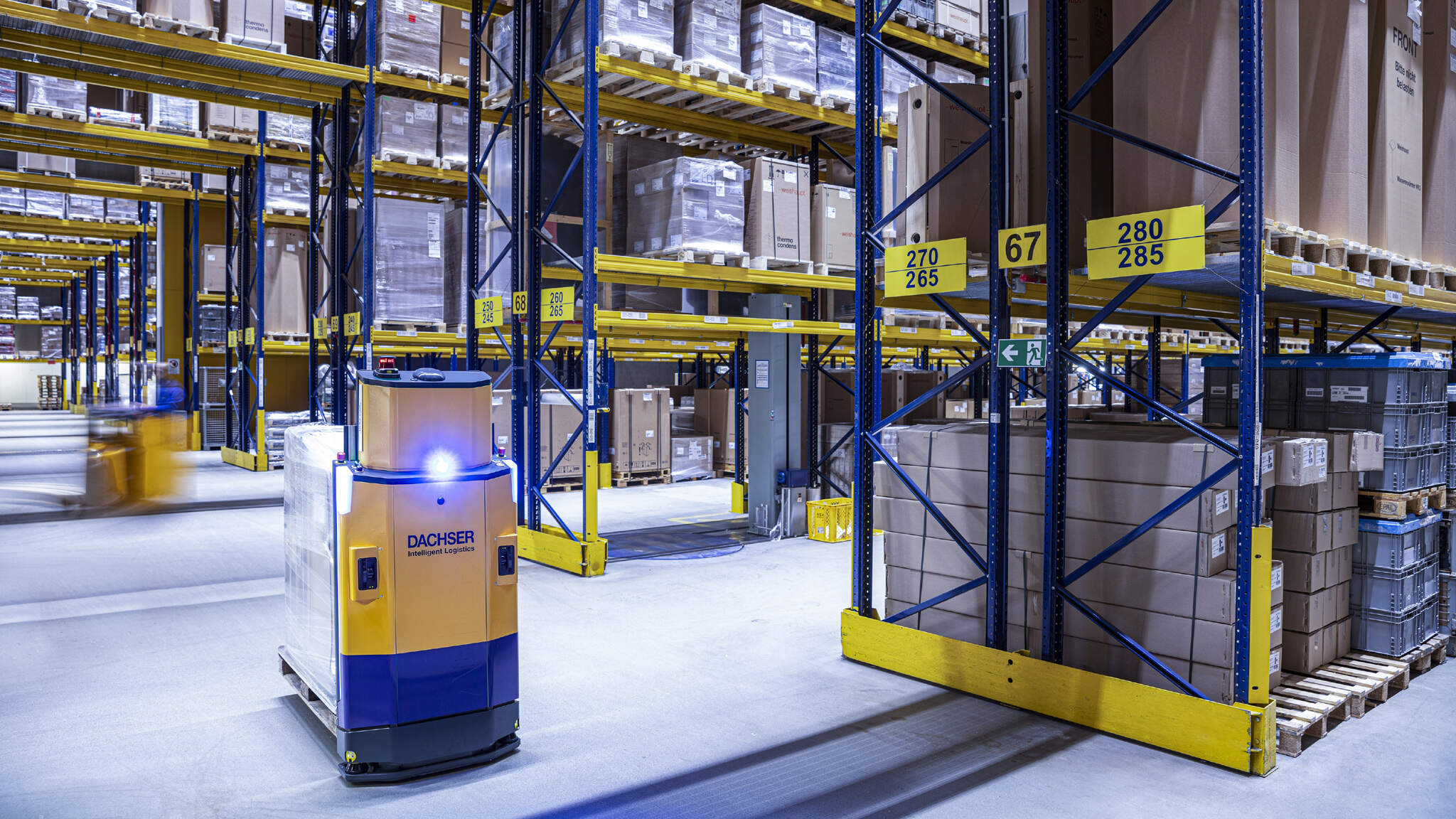DACHSER performs warehouse tests for automated guided vehicles
Tests of automated guided vehicles are currently underway at two DACHSER locations. By performing routine tasks, these vehicles will lighten employees’ workloads long-term.

As part of its research and development activities, DACHSER is currently performing an extended test run to ascertain the extent to which automated vehicles can operate alongside manually controlled ones in warehouses. To this end, the Langenau and Vaihingen locations have each been using one automated vehicle since the beginning of the year. Tests of swarm intelligence will also begin soon, involving both of these autonomous vehicles working together at the same location.
Inspiration for the tests came from a previous project conducted together with Fraunhofer IML, with which the company has been working as part of DACHSER Enterprise Lab since 2017. Using automated guided vehicles (AGVs) could spare employees from routine and physically strenuous work, freeing them up to concentrate on more demanding tasks. Another advantage is the vehicles’ working time: they can remain in operation 24 hours a day.
At the moment, AGVs perform tasks such as transporting goods from the warehouse entrance to the delivery zones in a high-bay storage area, autonomously picking up and setting down pallets in the process. Thanks to an interface with DACHSER’s own warehouse management system (WMS), MIKADO, the AGVs can be assigned transport jobs at any time; they then find their own route through the warehouse. The AGVs are equipped with lithium-ion batteries, which support inductive charging. “The charging process uses a base plate and takes just ten minutes,” explains Daniele Andreano, Team Leader Contract Logistics Engineering at DACHSER, who is responsible for the tests.
Safety is paramount
Since the vehicles drive autonomously, safety is a top priority. Each AGV is equipped with multiple sensors at various heights, allowing it to scan its surroundings continuously for any obstacles. If it detects one, the system brakes autonomously, either coming to a complete stop or calculating a new route that will allow it to bypass the obstacle. The maximum speed of 5 kph also plays a large role in safety.
“Our goal for the practical test is to gain valuable experience in using AGVs in the warehouse as well as in conjunction with the transit terminal. This will allow us to understand how these vehicles can best support employees in their day-to-day work and be integrated into daily operations. We’re very happy with the results we’ve had so far,” says Thomas Klare, Head of Corporate Contract Logistics at DACHSER in Kempten.